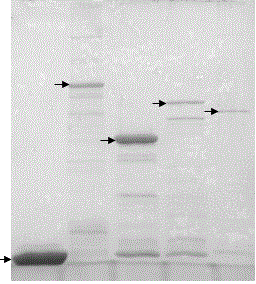Skip to comments.
Stanford study suggests coronavirus is more widespread than realized
spectator.us ^
| 4/17/20
| Ross Clark
Posted on 04/17/2020 11:02:46 AM PDT by a little elbow grease
click here to read article
Navigation: use the links below to view more comments.
first previous 1-20, 21-40, 41-60, 61-80, 81-85 last
To: dandiegirl
5000 iu per day. That is one tiny gelcap at WalMart.
81
posted on
04/17/2020 6:34:15 PM PDT
by
arthurus
( covfefe can do)
To: exDemMom
“The fact that they didn’t test for it at all is an issue. Coronavirus infection is pretty common this time of year.”
Would it not show up as false positive in control blood?
82
posted on
04/17/2020 6:35:40 PM PDT
by
ifinnegan
(Democrats kill babies and harvest their organs to sell)
To: arthurus
Thanks! Mine are 2000, I take one or 2 so maybe just stick with 2 especially since it’s been so cloudy and gloomy.
83
posted on
04/17/2020 7:25:12 PM PDT
by
dandiegirl
(BOBBY)
To: ifinnegan
Not necessarily. When were the control blood samples taken? “Pre-Covid sera” suggests to me that the samples date from before cold/flu season hit, so I would expect titers to be fairly low for any respiratory virus at that time. Also, the sample sizes for the controls are problematic, given that prevalence data for the common cold caused by any coronavirus species are unknown.
I also have some issue with the weighting of subject samples. The authors do acknowledge that their test subject selection could have been biased in favor of those who have previously had symptoms. They could have enrolled in the study to seek confirmation (and this would not rule out that they had one of the common coronavirus infections), and that would have heavily weighted the study. The researchers had a raw positive rate of 1.5%, but then used statistical methods to extrapolate a prevalence of 2.49% to 4.16%. How is that kind of extrapolation even valid? Especially given the bias inherent in any study where the subjects are self-selected?
And so on. I’m sure that if I were to take the time to read the study deeply, I could come up with a lot more questions that if I were reviewing it for potential publication, I’d want answered.
84
posted on
04/18/2020 4:50:55 AM PDT
by
exDemMom
(Current visual of the hole the US continues to dig itself into: http://www.usdebtclock.org)
To: Shethink13
So, a lot of people tested for antibodies with a non-validated test came up positive. It looks to me like they're detecting people who have had ordinary coronavirus infections--in other words, it's detecting people who had colds. Nope. Wrong again. Oops, I did not see this until just now.
I am not wrong. Neither of those links show that any Covid-19 antibody test is absolutely 100% specific for Covid-19. And given that coronaviruses have structural similarities, it may not be possible to develop a test that ONLY detects Covid-19 antibodies, and nothing else.
According to one Chinese study, "The specificity of the assays for Ab, IgM and IgG was determined as 99.1% (211/213), 98.6% (210/213) and 99.0% (195/197) by testing of samples collected from healthy individuals before the outbreak of SARS-CoV-2." When there is an error rate of 1-1.4% in an assay, and the measurement of antibody is 1.5% (as in the Stanford study), then I must question the data, since it is right there in the margin of error.
Also, I am posting an image of one of hundreds of immunoassays that I personally conducted, to show graphically the problem with antibody cross-reactivity:

The arrows point to the specific proteins that I was looking for. I knew they were the correct proteins because of their size (I did not show the size ladder on the image). This assay was run on a sample of proteins that had been separated by size. The immunoassays such as they are conducting to detect seropositivity do not separate out anything. Look at my image and imagine that each column was, instead, condensed into a single spot, the way a seropositivity assay would be run. You can see how condensing all of those lines into a spot would create a "positive" result, even if the specific protein wasn't there.
85
posted on
04/22/2020 5:06:37 AM PDT
by
exDemMom
(Current visual of the hole the US continues to dig itself into: http://www.usdebtclock.org)
Navigation: use the links below to view more comments.
first previous 1-20, 21-40, 41-60, 61-80, 81-85 last
Disclaimer:
Opinions posted on Free Republic are those of the individual
posters and do not necessarily represent the opinion of Free Republic or its
management. All materials posted herein are protected by copyright law and the
exemption for fair use of copyrighted works.
FreeRepublic.com is powered by software copyright 2000-2008 John Robinson
